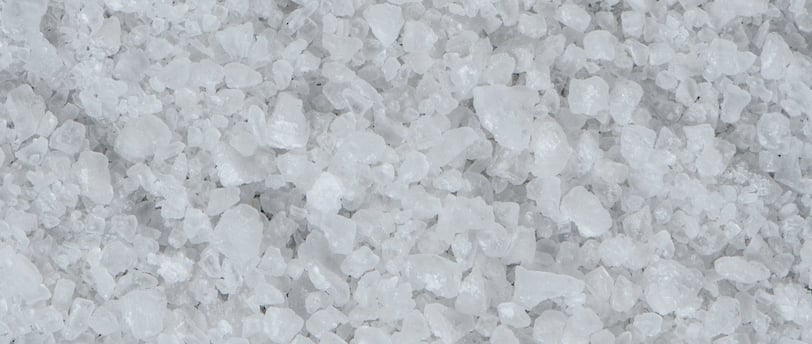Natural Sources of Salt
From Historical Methods to Survival Scenarios
WILD EDIBLESALTERNATE USESFOOD
By: Stephanie
1/18/20243 min read


Introduction
Salt, a ubiquitous mineral, has played a vital role in human history and continues to be an essential ingredient in our daily lives. While most of us are familiar with table salt, which is primarily sourced from underground mines, there are various natural sources of salt and sodium that have been utilized throughout history. In this article, we will delve into the diverse origins of salt, discuss historical methods of collecting, purifying, and storing salt, explore different types of rock and mineral salts available in the USA, and even touch upon how survivors in an apocalypse setting can scavenge or harvest salt from their local areas.
Natural Sources of Salt
1. Sea Water: One of the most abundant sources of salt is the vast oceans that cover our planet. Sea water contains approximately 3.5% salt, primarily composed of sodium chloride. The process of collecting salt from sea water involves evaporating the water, leaving behind crystallized salt.
2. Salt Licks: In some regions, natural salt deposits can be found in the form of salt licks. These are mineral-rich areas where animals gather to consume salt. Salt licks occur when underground salt deposits are exposed at the surface, attracting wildlife seeking essential minerals.
3. Plant Ash: Certain plants, such as saltwort or glasswort, accumulate salt in their tissues. Burning these plants and collecting the resulting ash can yield a salt-rich substance. This method was historically used in regions where access to other salt sources was limited. https://practicalselfreliance.com/coltsfoot-salt/
Historical Methods of Collecting, Purifying, and Storing Salt
1. Solar Evaporation: This method involves collecting sea water or brine in shallow pools and allowing the sun and wind to evaporate the water, leaving behind salt crystals.
2. Boiling: In areas where underground salt deposits were accessible, water was added to the salt-rich soil, creating a brine. The brine was then boiled, causing the water to evaporate and leaving behind salt crystals.
3. Salt Pans: These were large shallow basins used to evaporate brine and collect salt. The brine was poured into the pans, and as the water evaporated, salt crystals formed and were collected.
4. Underground Mining: In regions with underground salt deposits, miners would extract the salt by drilling or blasting through the rock layers. The salt would then be crushed and purified.
Types of Rock & Mineral Salts
1. Himalayan Pink Salt: Mined from the Khewra Salt Mine in Pakistan, this salt is rich in minerals and gets its pink hue from trace elements like iron. It has a mild, slightly sweet flavor and is often used as a finishing salt or in gourmet dishes.
2. Celtic Sea Salt: Harvested from the coastal regions of France, this salt is hand-raked from clay-lined salt ponds. It retains its natural moisture and contains trace minerals. It has a briny, mineral-rich flavor and is well-suited for everyday cooking and seasoning.
3. Red Alaea Salt: Originating from Hawaii, this salt gets its distinctive red color from volcanic clay called alaea. It has a slightly earthy flavor and is often used in traditional Hawaiian dishes like poke or Kalua pig.
4. Kosher Salt: Although not a rock or mineral salt, kosher salt is worth mentioning due to its popularity. It is called "kosher" because it is used in the koshering process of preparing meat according to Jewish dietary laws. Kosher salt has a coarse texture and is ideal for koshering meat or general cooking purposes.
Survival Scenarios: Scavenging or Harvesting Salt
In the event of an apocalypse or survival scenario, finding sources of salt can be crucial for preserving food and maintaining electrolyte balance. Here are a few ways survivors can scavenge or harvest salt from their local areas:
1. Saltwater Distillation: By heating saltwater in a container and collecting the condensed vapor, survivors can obtain fresh water and leave behind salt crystals.
2. Salt Springs: Some regions may have natural salt springs where saltwater emerges from the ground. Collecting the brine and evaporating it can yield salt.
3. Salt-rich Plants: Identifying salt-rich plants like saltwort or glasswort and burning them to collect the resulting ash can provide a source of salt.
4. Salt Mines: If survivors come across underground salt deposits or abandoned salt mines, they can extract salt by breaking or crushing the rock layers.
It's important to note that in survival scenarios, caution should be exercised when consuming salt from unconventional sources, as impurities or toxins may be present. Purification methods, such as boiling or filtering, should be employed wherever possible.
Conclusion
Natural sources of salt and sodium offer a fascinating glimpse into our historical reliance on this essential mineral. From sea water to salt licks, plant ash to underground mines, the methods of collecting, purifying, and storing salt have evolved over time. Additionally, the availability of different types of rock and mineral salts in the USA provides a diverse range of flavors and culinary applications. In survival scenarios, knowing how to scavenge or harvest salt can be a valuable skill. By understanding the origins and techniques associated with salt production, we gain a deeper appreciation for this seemingly ordinary mineral that has shaped human history.